Tibet. Part II. CitiesMapSeptember 24–27, 2013 The fences and walls of houses in traditional Tibetan villages are covered with cow dung. 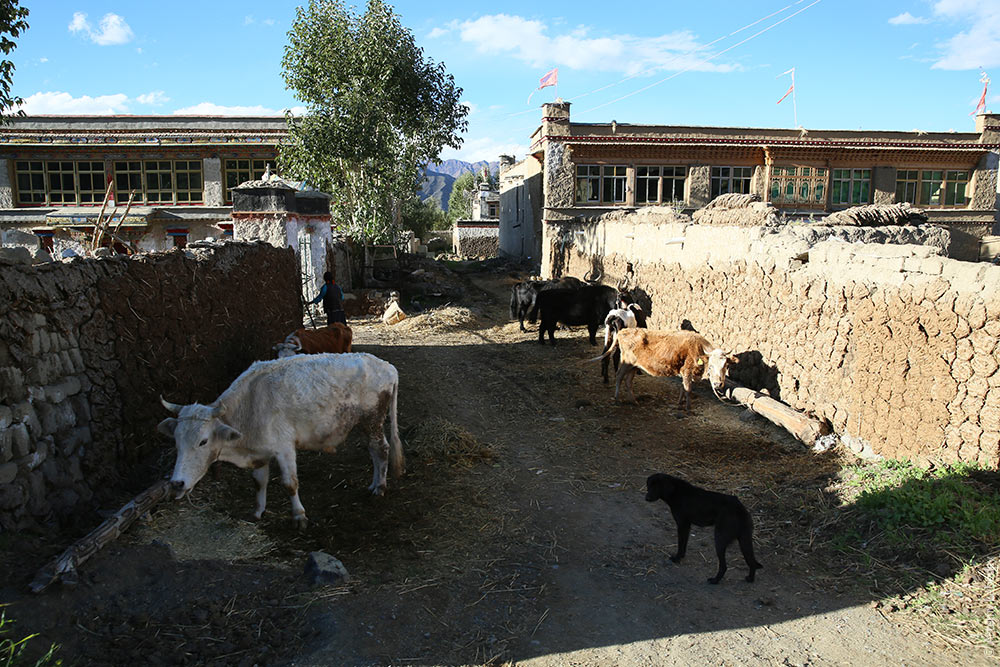 Even the simplest-looking village homes all have richly decorated windows and doorways. There’s usually a sun porch or terrace over the main entrance, which shows that the farmers are no strangers to comfort. 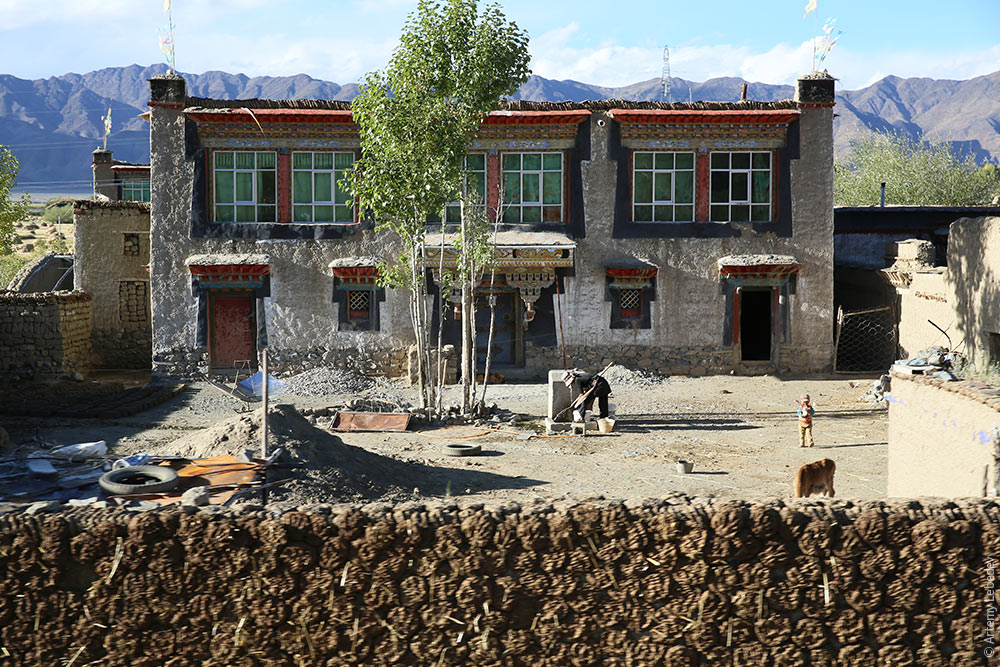 LhasaMapA pretty nice city. 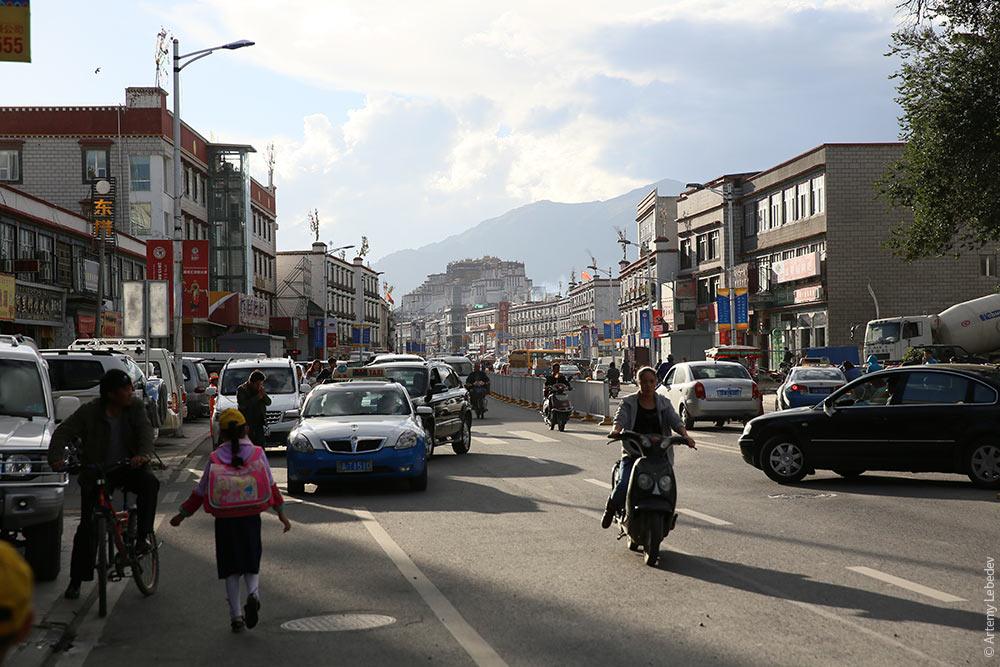 With a strong Chinese influence. 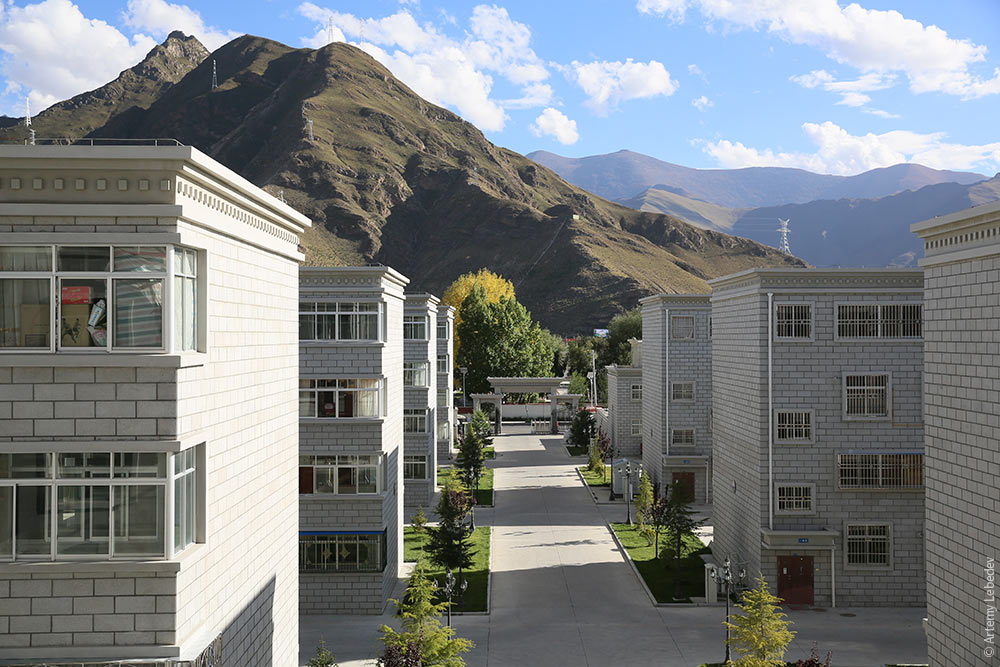 A very strong Chinese influence. 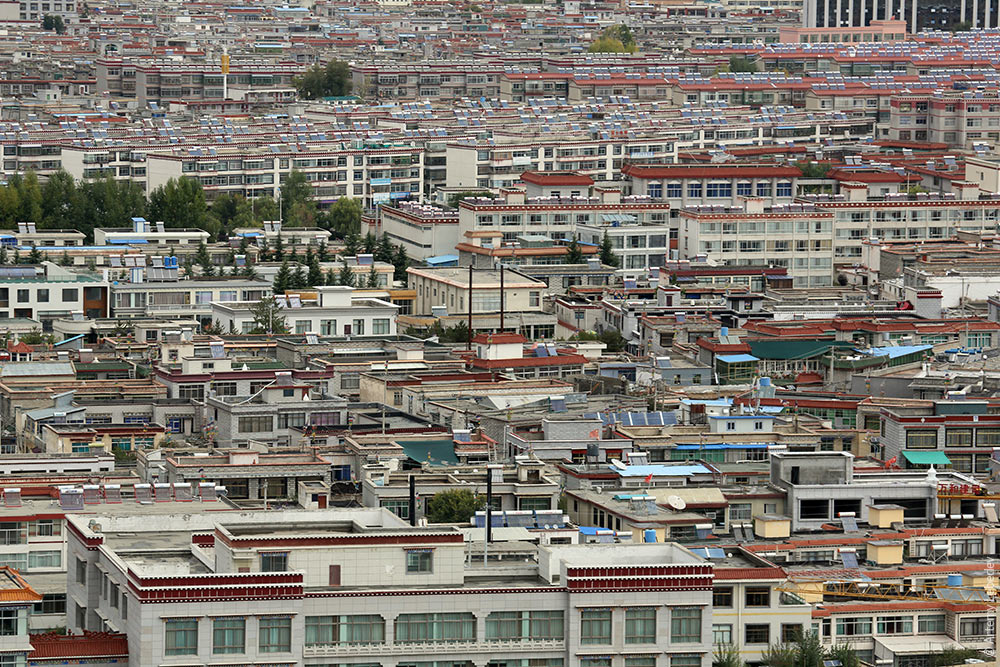 A bus stop. 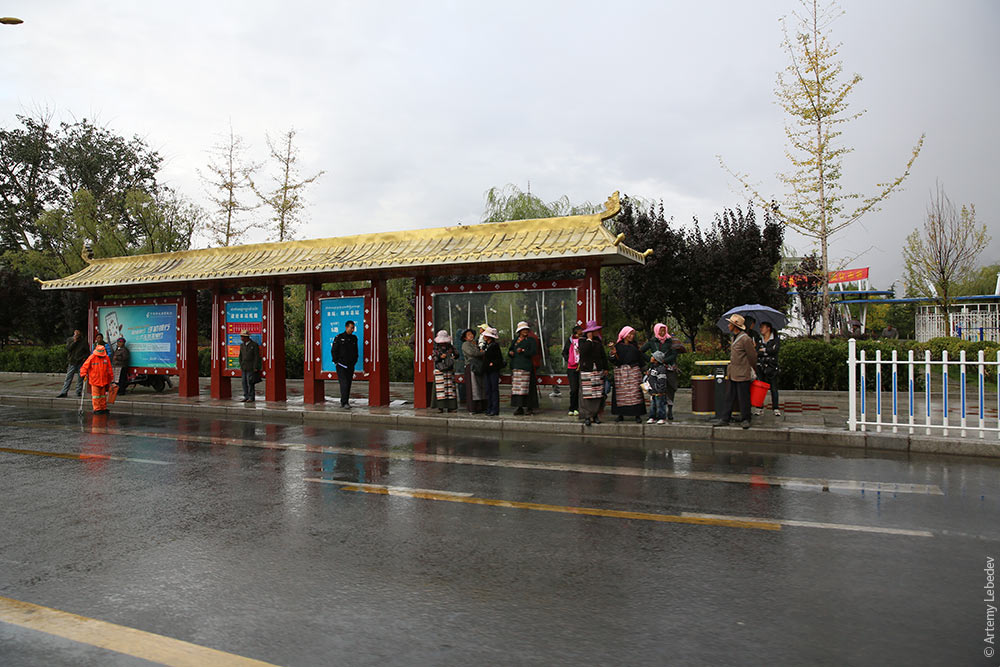 A post box whose features betray its British ancestry. 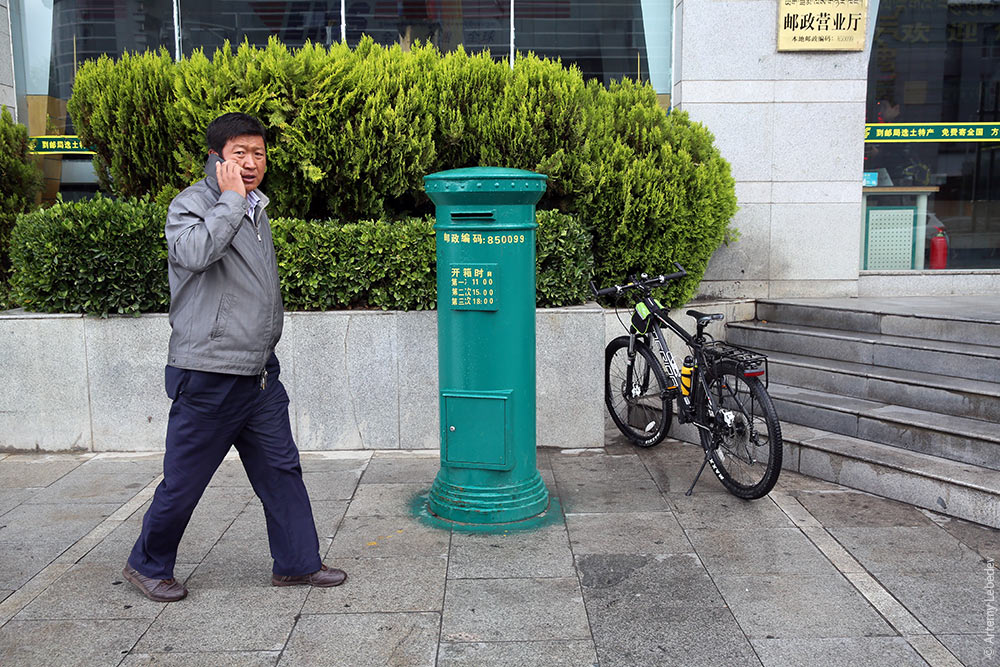 Every street trash can has two sections: one for regular trash and one for recyclables.  Tibet’s most famous landmark is Potala, the palace of the Dalai Lama. The Dalai Lama himself fled into exile in 1959, and now the palace is a museum. But the Chinese can’t allow symbols of other religions to just stand there like that. So they stick a super-tacky but enormous monument to fallen heroes or defenders or whatever in front of every important site. They build a big square, place guards of honor around it, etc. In other words, they show everyone whose religion is boss.  A palace trash can. 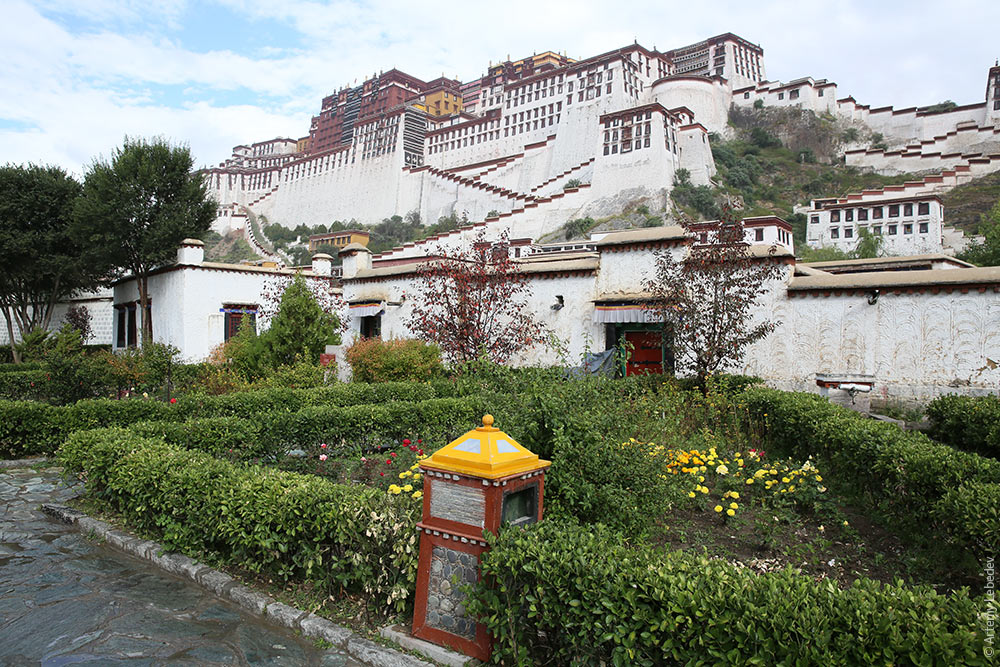 By the way, the Chinese generally don’t get worked up about that many things, but the state ideology is sacred. I jokingly asked the guide what the Dalai Lama’s visiting hours are, and the poor man went pale, glanced around furtively, and whispered that it wasn’t a very good topic for conversation. I presume that asking an Intourist guide in 1950s Moscow about whether you could get an invitation to a barbecue with comrade Stalin would have elicited the same reaction. 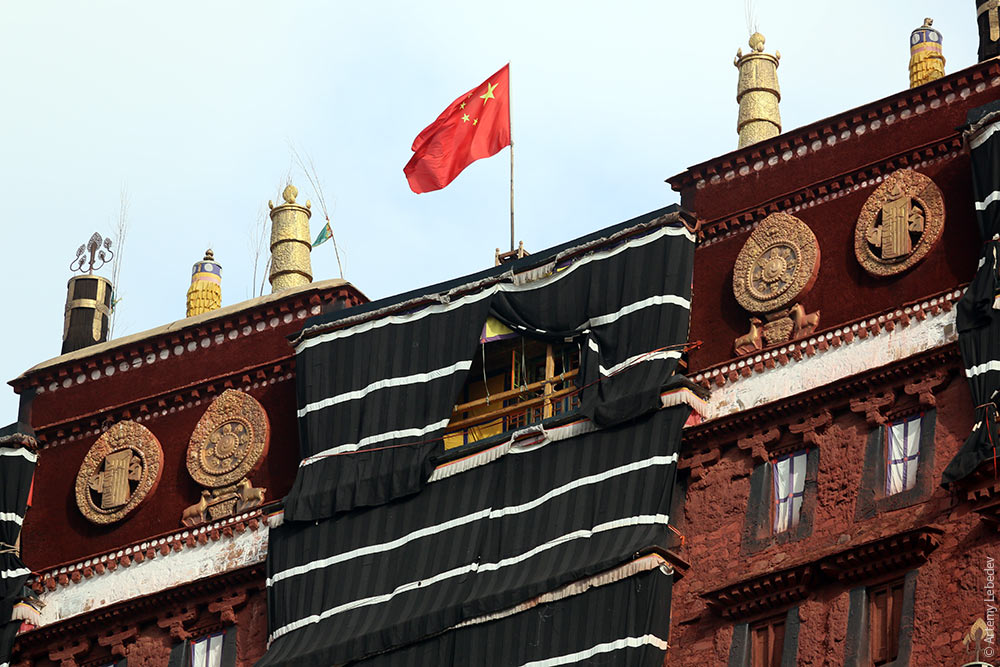 That said, it’s perfectly fine to display religious devotion for decorative purposes—this attracts tourists. Here are branches of some kind being burned. 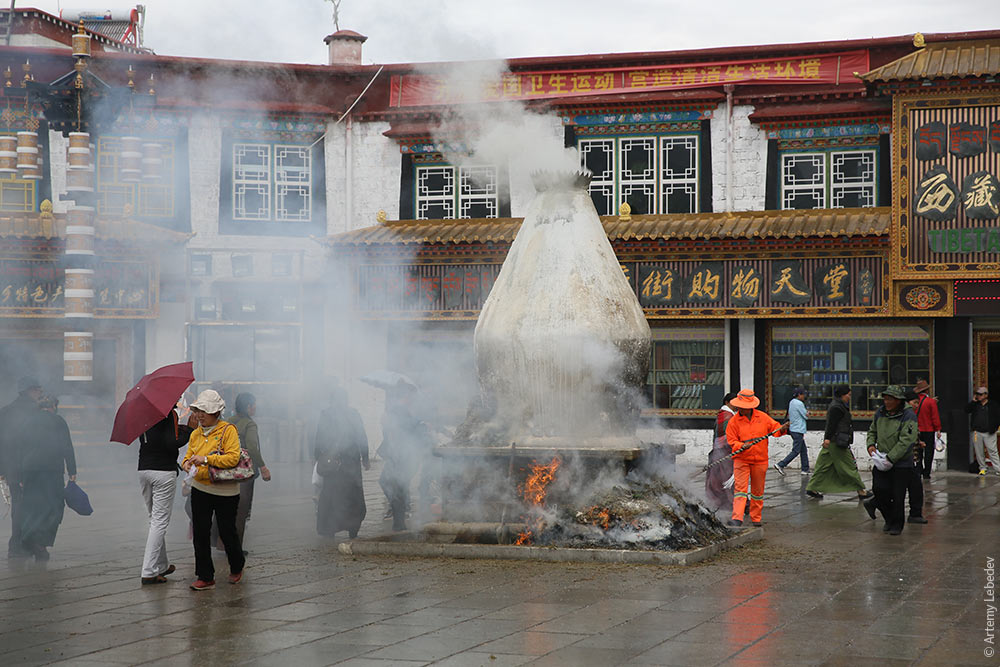 What can you expect from simple old village women? Might as well let them prostrate themselves on the ground. 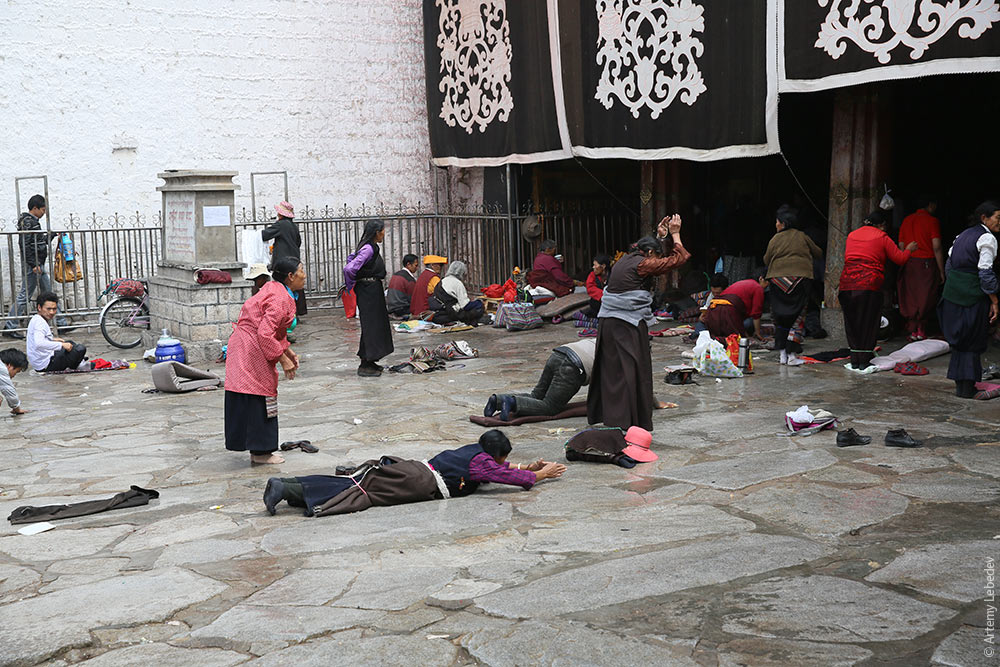 People throw paper bills into the fountain here to make their wishes come true. The bills don’t sink very easily; they have to be helped along.  A city streetlight. 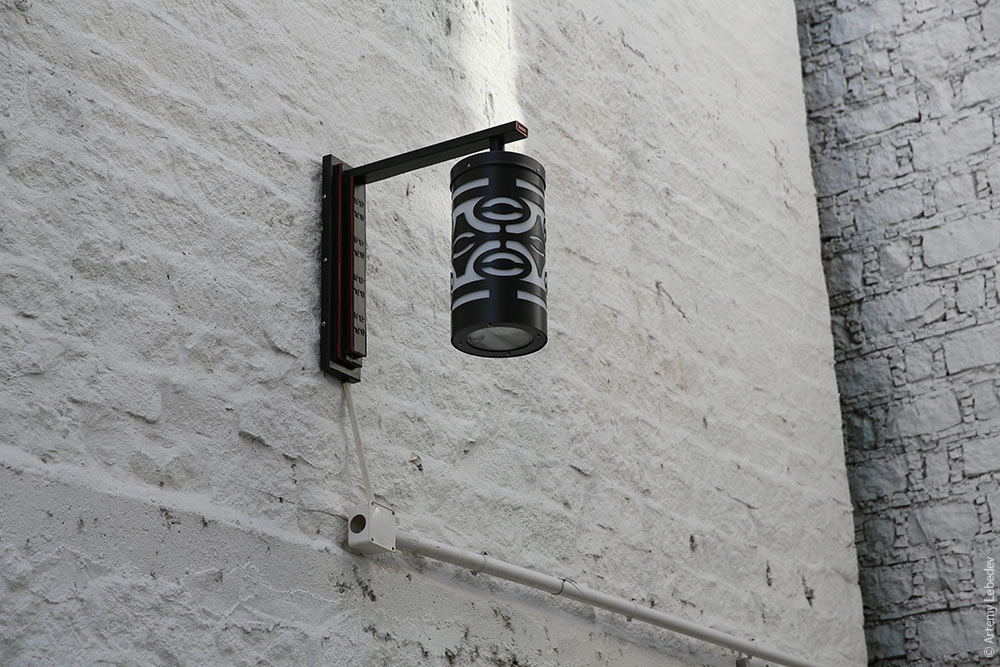 Bollards along the sidewalk. 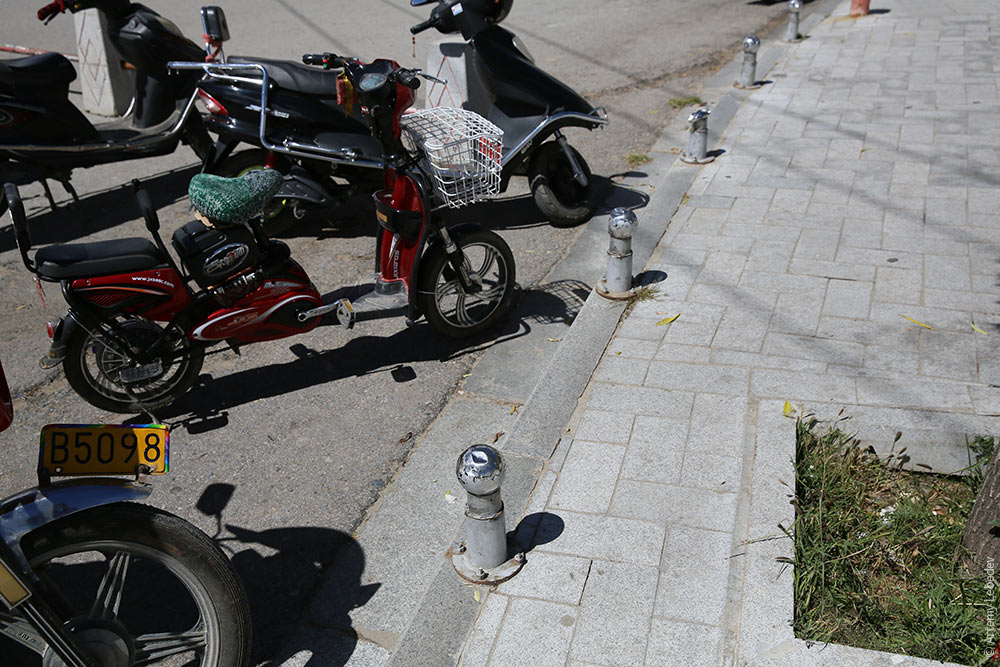 An avenue, typically Chinese in style. 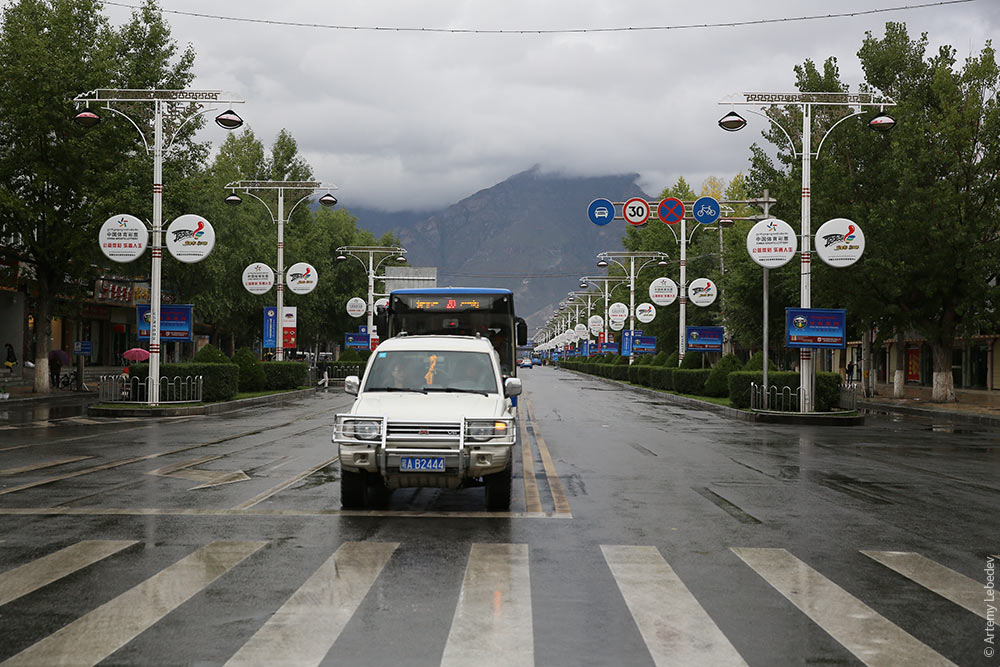 A phone booth. 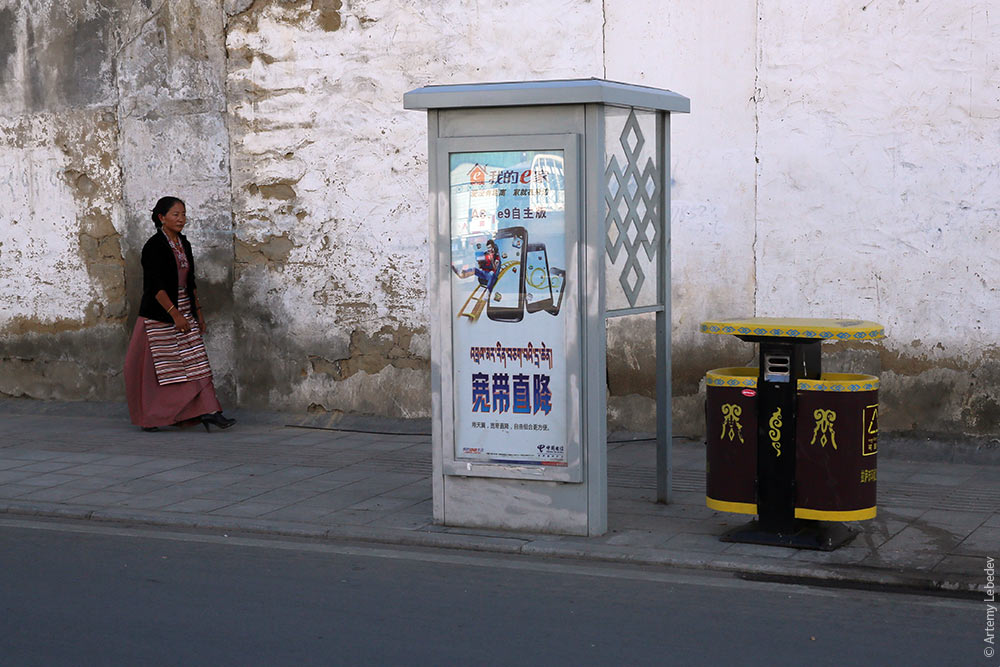 An exceptionally hideous pedestrian on a traffic light, whose dangling leg is supposed to symbolize walking.  Pedestrian lights in Tibet usually consist of a fairly tall column with a pictogram that’s half a meter high.  The most interesting traffic light here is the one for cars. It has one big color band which shrinks until it turns into a square. The red light shrinks from right to left, the green one—from left to right. It’s a countdown timer and signal in one. 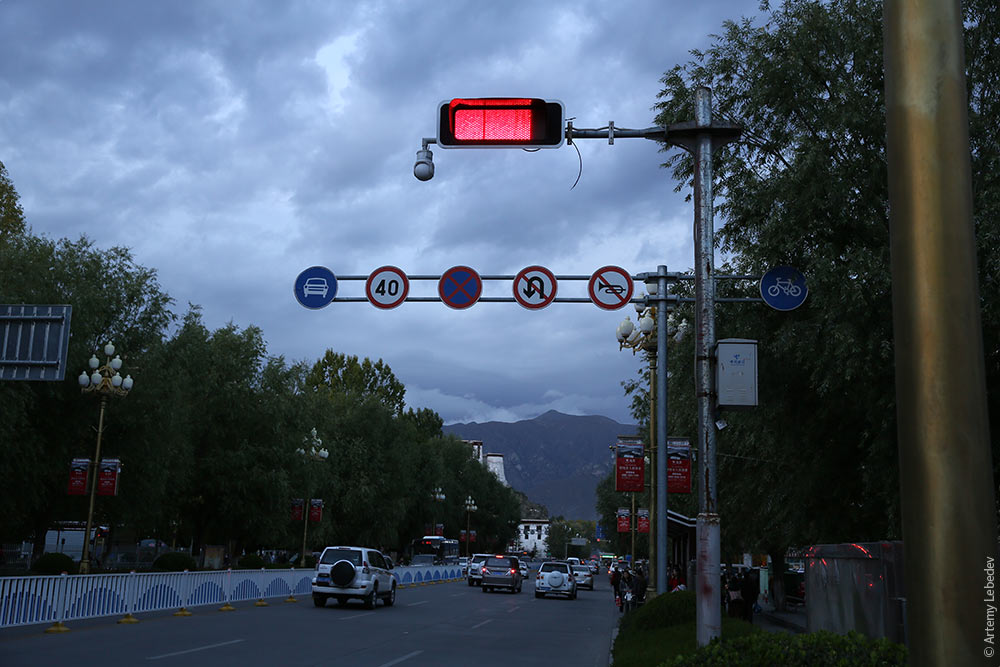 NagarzeMapA payphone. 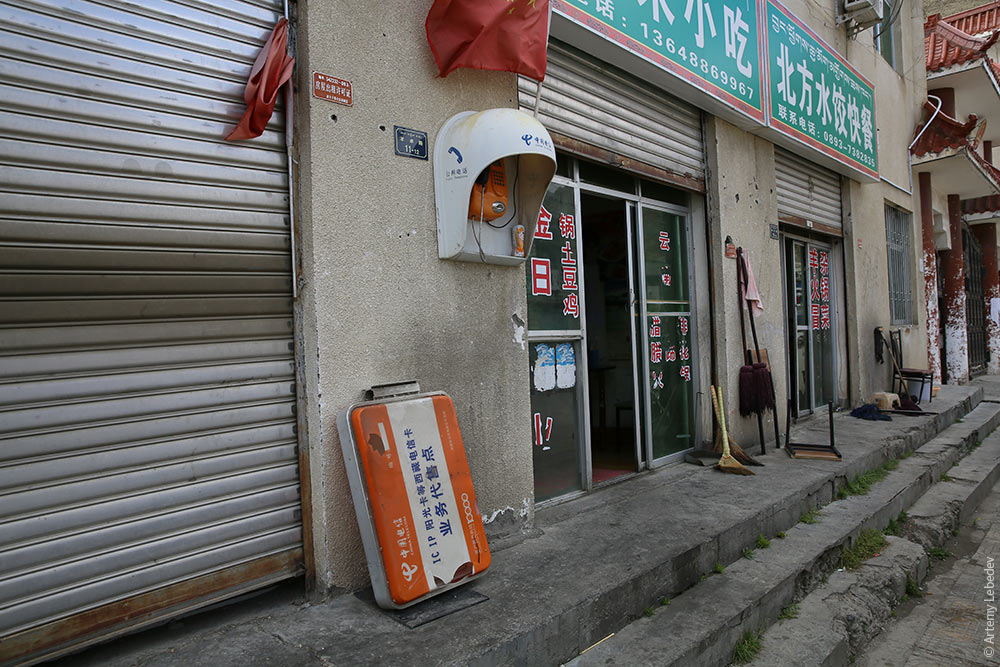 Another payphone. 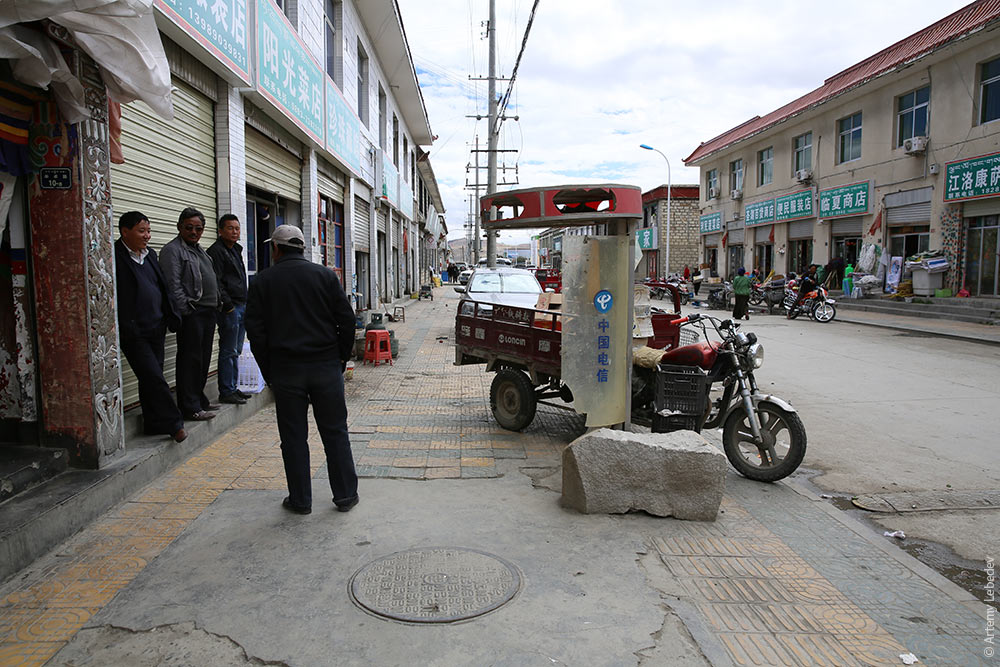 A fire hydrant. 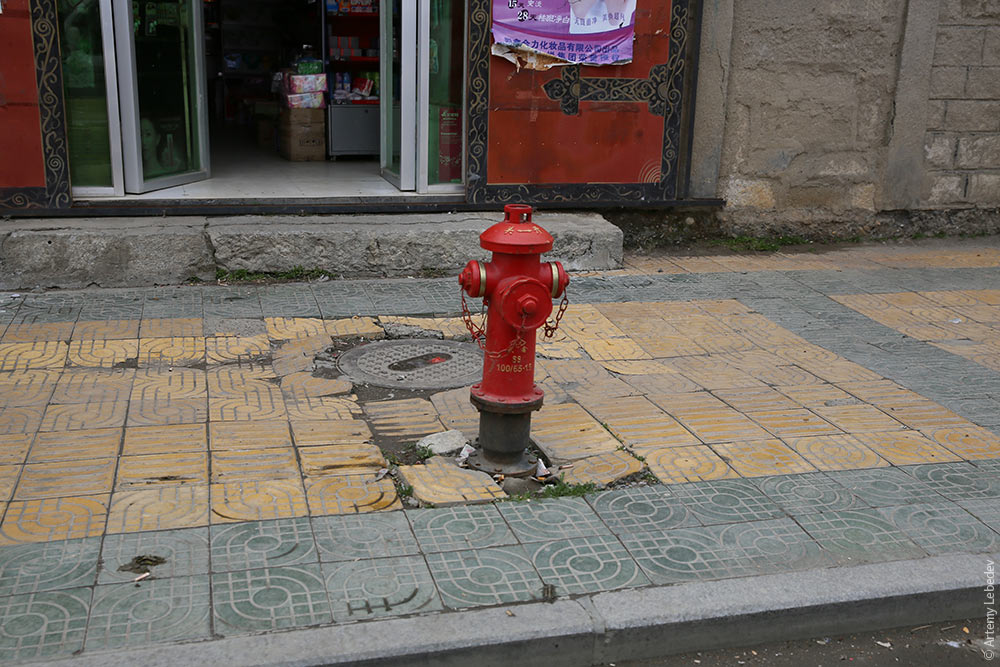 The city’s food market. 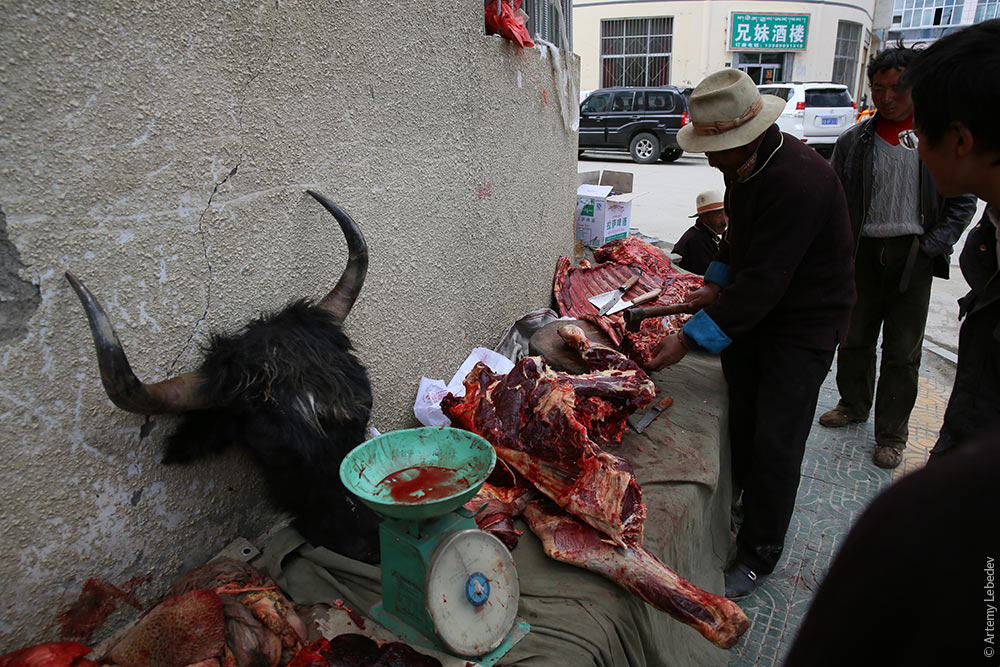 GyantseMapThere are some beautiful temples in the city. 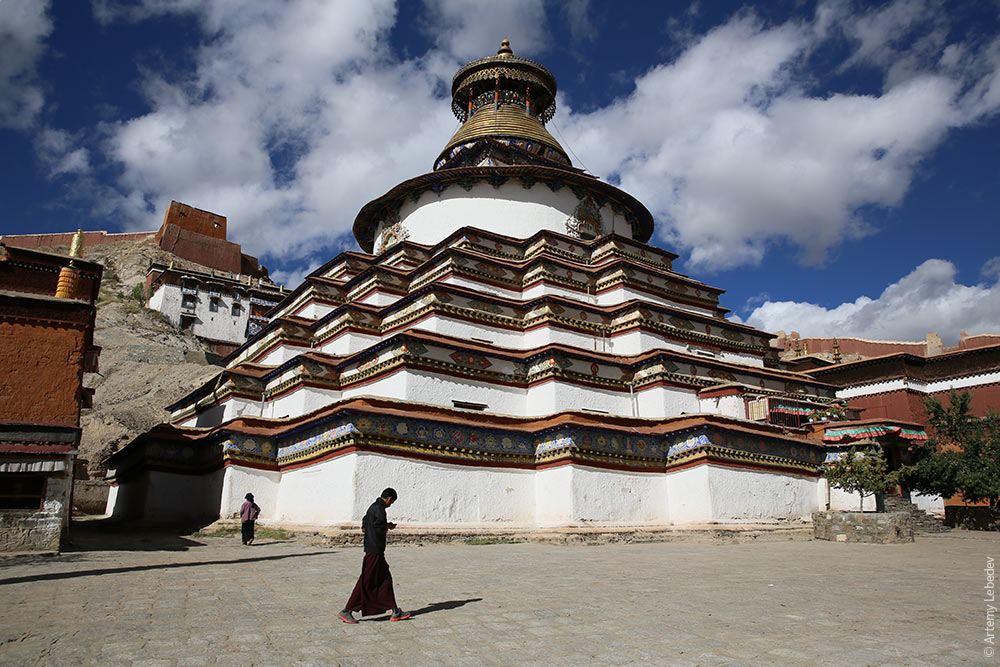 And outside the city. 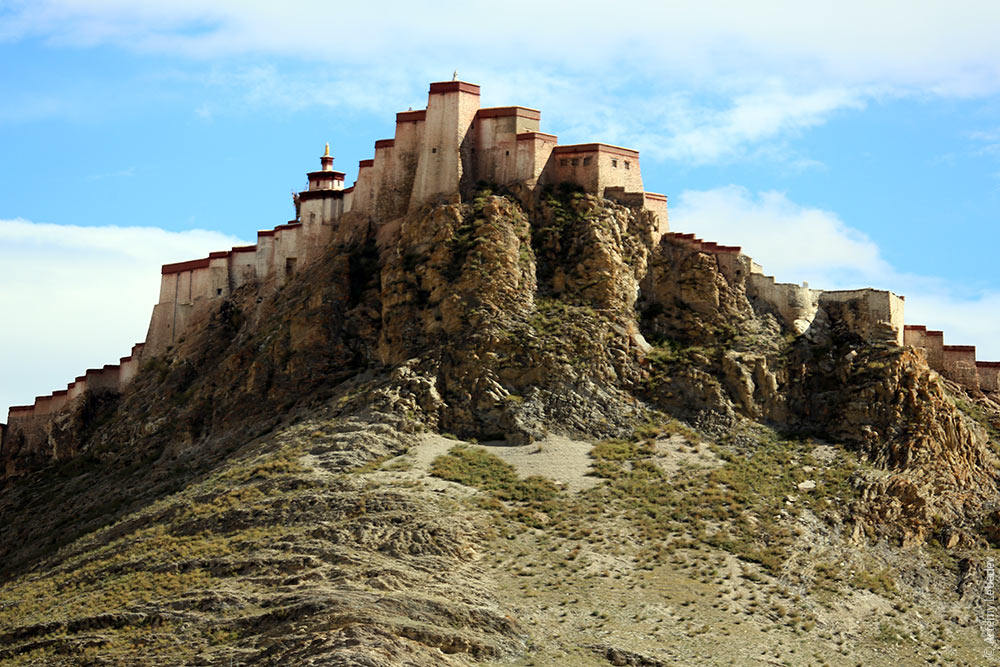 ShigatseMapThe crosswalk sign is turned to face pedestrians, so drivers have no chance of seeing it. 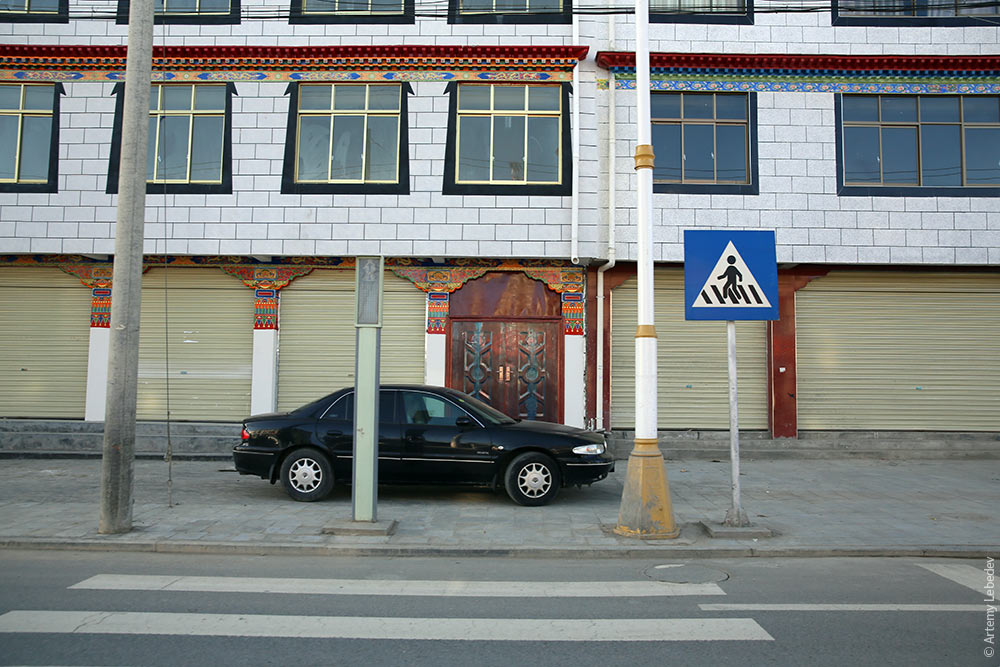 Policewomen roll a mobile traffic police platform down the street. 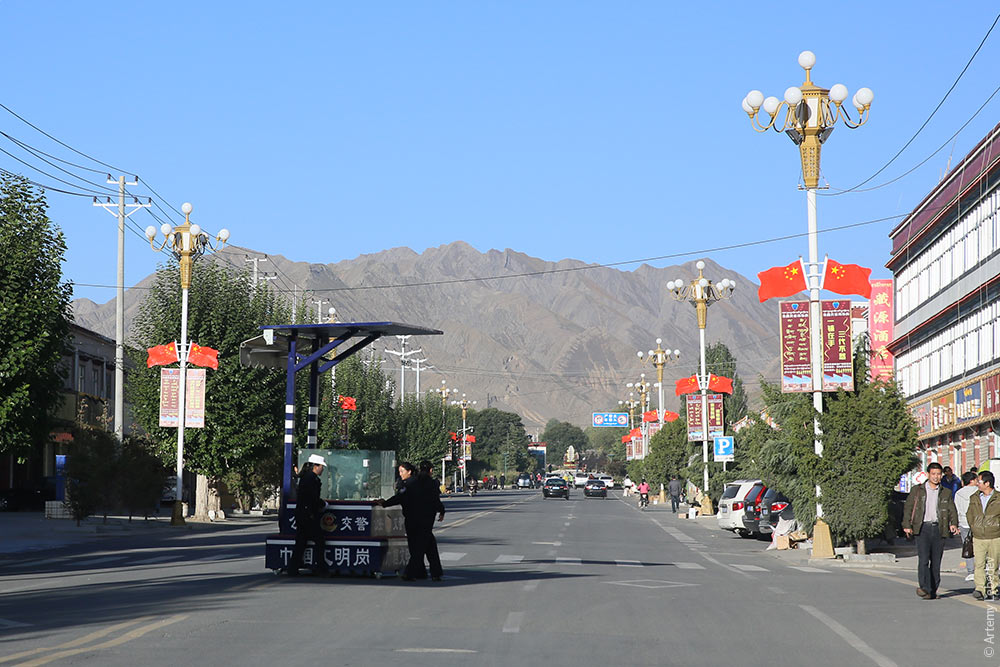 The city awakens from slumber. 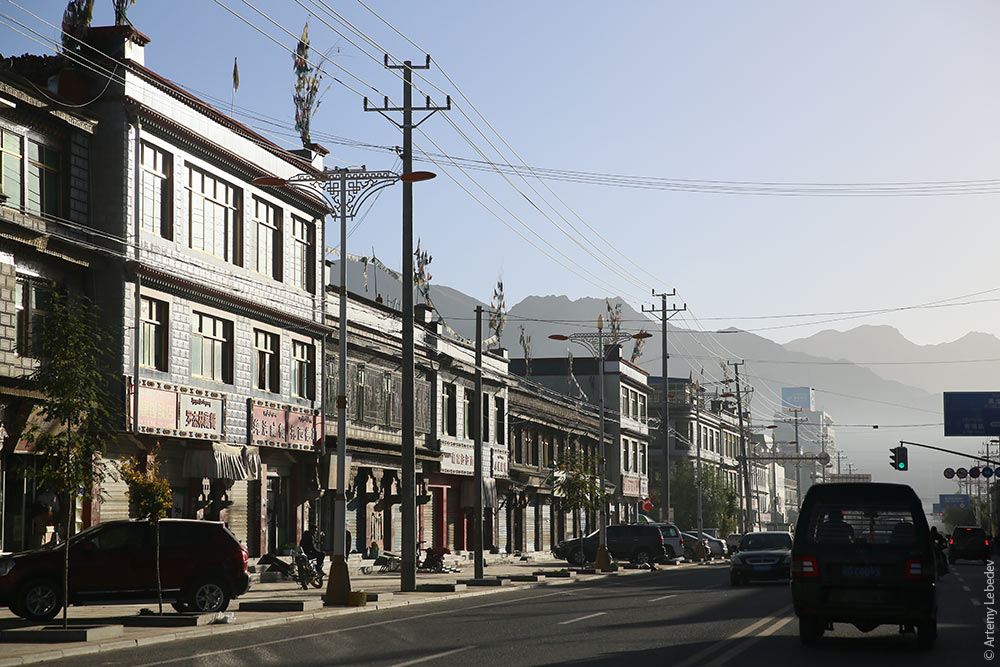 |